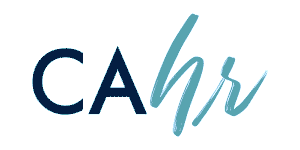Inside CAHR24: Lifecycle of an Employment Lawsuit: Effective Documentation, Complaints/Investigations, and Defending the Case
Over the past ten years, lawyers and judges have witnessed jurors awarding record high verdicts throughout the country. Between 2015 and 2019, the average verdict in the National Law Journal’s Top 100 Verdicts more than tripled from $64 million to $214 million.[1] In 2022, a Los Angeles jury awarded a nuclear verdict of $464 million to two employees who brought a whistleblower claim against their former employer. There are likely many factors that contribute to this trend, but one is a negative change in the public’s attitude toward all employers including corporations, small businesses and public entities.
No one can prevent an employee’s workplace complaint from turning into a lawsuit. But there are some strategies and resources that an employer can use to minimize the runaway verdicts if it does.
The Importance of Documentation.
Creating and maintaining proper documentation is one of the simplest and least expensive ways to avoid significant exposure in an employment litigation matter. Most human resources professionals know that documentation is important – but many struggle to identify the who, what, when, where and why of making it effective. Missing documentation, or worse yet, documentation that acts as a “smoking gun,” can be the one factor that determines whether an employer will win or lose at trial.
The Keys to Investigating Complaints.
Many employers are reluctant to spend the time and the money to adequately assess, investigate, and respond to employee complaints or reports of misconduct.
However, many types of claims legally require an employer to investigate. Using a case study, we will identify the top five mistakes that employers make in conducting workplace investigations and how to avoid them.
Successfully Defending the Lawsuit.
Once the lawsuit is headed to trial, employers can take proactive steps to minimize the chances of a jury awarding high monetary damages to the employee. We will highlight the role of the human resources professional both pre-trial and during trial, and the resources and winning strategies that are available to employers during this stressful phase.
For more information on these three anti-litigation strategies, register now and join Cheryl Johnson-Hartwell, Susan Arduengo, and Elisabeth Frater for the #CAHR24. Their session, entitled “Lifecycle of an Employment Lawsuit” is scheduled for Tuesday, May 21 at 10:00 AM.
Cheryl and Elisabeth are partners at Burke, Williams & Sorensen LLP, a California based law firm that represents both public and private entities throughout the state of California. Susan is an Attorney Investigator and the owner of Arduengo Investigations where she conducts workplace investigations for California employers.
[1] National Law Journal’s 2015 and 2019 editions of The Top 100 Verdicts.

Last chance to register!

